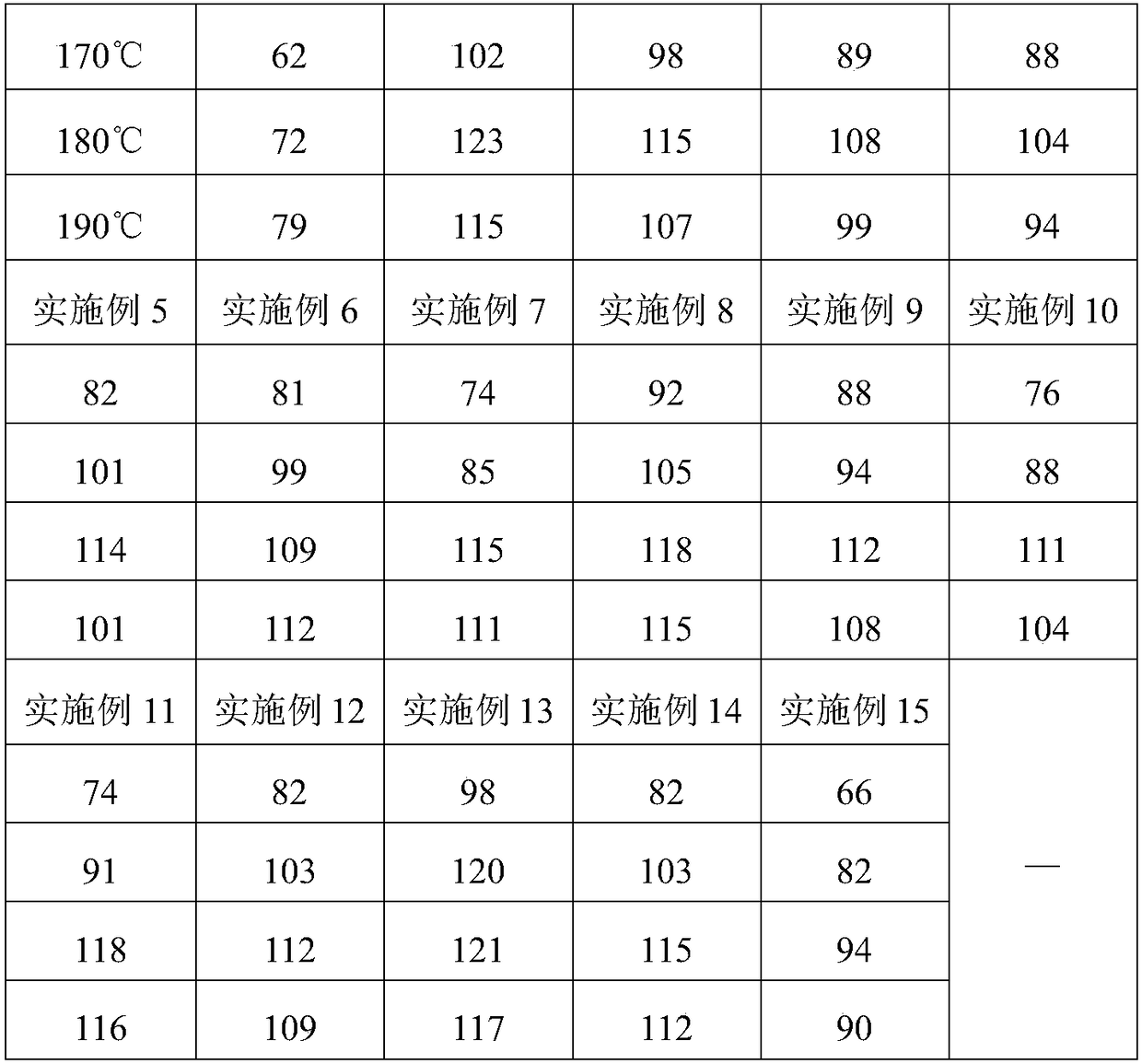Heat sealing layer, CPP film, preparation method thereof and aluminum-plastic film
A technology of heat sealing layer and core layer, applied in the field of materials, can solve problems such as low heat sealing strength, and achieve the effects of improving impact resistance and transparency, improving low-temperature impact resistance, and improving comprehensive performance.
- Summary
- Abstract
- Description
- Claims
- Application Information
AI Technical Summary
Problems solved by technology
Method used
Image
Examples
preparation example Construction
[0054] According to another aspect of the present invention, there is also provided a method for preparing the above-mentioned CPP film, which includes the following steps: forming a heat-seal layer 10, a core layer 20, and a composite layer 30 that are sequentially stacked by a multi-layer co-extrusion casting technique, Get as figure 1 CPP film shown. The above-mentioned heat seal layer can make the CPP film have higher heat seal strength, impact resistance and mechanical strength, so that the CPP film can be used as the inner layer of the dry aluminum-plastic composite film, which greatly improves the comprehensive performance of the dry aluminum-plastic film .
[0055] In a preferred embodiment, a multilayer co-extrusion casting method is used to form the heat-sealing layer 10, the core layer 20, and the composite layer 30 that are sequentially stacked. At this time, the above-mentioned preparation method includes the following steps: The first raw material of 10, the secon...
Embodiment 1
[0060] The preparation method of the CPP film provided in this embodiment includes the following steps:
[0061] 70 parts of the first random copolymer polypropylene, 20 parts of the first block copolymer polypropylene and 10 parts of the polyolefin elastomer are used to prepare the heat seal layer, wherein the weight percentage of ethylene in the first random copolymer polypropylene is 7% And the first random copolymer polypropylene is a random copolymer polypropylene with a melting point of 135°C (commercially available), the weight percentage of ethylene in the first block copolymer polypropylene is 15%, and the first block copolymer polypropylene It is a block copolymer polypropylene with a melting point of 155°C (commercially available); the polyolefin elastomer is a propylene-based elastomer (Vistamax, 3000), and the polyethylene content of the polyolefin elastomer is 10wt%;
[0062] 70 parts of the second block copolymer polypropylene, 20 parts of polyethylene copolymer (Leo...
Embodiment 2
[0066] The difference between the preparation method of the CPP film provided in this embodiment and Embodiment 1 is:
[0067] The first random copolymer polypropylene is a random copolymer polypropylene (commercially available) with an ethylene content of 5wt% and a melting point of 140°C. The first block copolymer polypropylene is a copolymer with an ethylene content of 9wt% and a melting point of 160°C. Block copolymer polypropylene (commercially available), the second block copolymer polypropylene is a block copolymer polypropylene with an ethylene content of 7wt% and a melting point of 165°C (commercially available), and the second random copolymer polypropylene is Random copolymer polypropylene with an ethylene content of 5wt% and a melting point of 140°C (commercially available), the third block copolymer polypropylene is a block copolymer polypropylene with an ethylene content of 9wt% and a melting point of 160°C (commercially available ).
PUM
| Property | Measurement | Unit |
|---|---|---|
| melting point | aaaaa | aaaaa |
| melting point | aaaaa | aaaaa |
| melting point | aaaaa | aaaaa |
Abstract
Description
Claims
Application Information
 Login to View More
Login to View More - R&D
- Intellectual Property
- Life Sciences
- Materials
- Tech Scout
- Unparalleled Data Quality
- Higher Quality Content
- 60% Fewer Hallucinations
Browse by: Latest US Patents, China's latest patents, Technical Efficacy Thesaurus, Application Domain, Technology Topic, Popular Technical Reports.
© 2025 PatSnap. All rights reserved.Legal|Privacy policy|Modern Slavery Act Transparency Statement|Sitemap|About US| Contact US: help@patsnap.com



